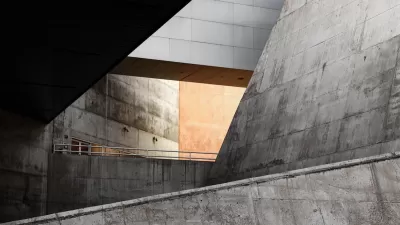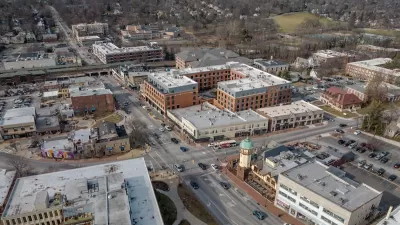Urban planners are obligated to sensible and efficient development, but can also take community ideas into account. By prioritizing concerns and thoughts and keeping the future in mind, planners can develop optimal urban communities.

Urban development must support the people and businesses in it. Currently, nearly 60 percent of people worldwide live in a city, and this number will likely grow another 10 percent by 2050. With so many humans concentrated in one area, urban planners need to listen to and anticipate the needs of residents.
How can an urban planner include community ideas in their developments? Here is a look at how to gather suggestions and introduce helpful infrastructure that will aid the growth of cities in the future.
Start by Gathering Ideas
The most straightforward way to include community ideas is to ask the people what they need. Jumping into a design without inquiring about any necessary additions can make a space unhelpful or inaccessible. It is essential to start by listening to locals and seeing what thoughts they have about improving the area.
Urban planners can accomplish this by sending out written forms or creating a digital survey—the latter might be helpful for the ease of gathering the collected data, specifically when optimized for respondents. However, not everyone has access to a computer, so it is essential to provide a physical option. It could also be beneficial to hold a town hall where residents can offer their opinions about the proposed development.
It can also be beneficial at this stage to include any current thoughts from the planner’s point of view and explain why these decisions are advantageous. Doing so with accessible language and visuals can help the community learn about what changes will happen and potentially spur more considerations from them.
Prioritize Common Thoughts and Concerns
Once the team gathers enough information from local residents, they must organize what they can accomplish based on common interests. For example, there may be a few people interested in repaving an area, while others would like increased space for a community garden. While an urban planner should try their best to address each desire, being totally comprehensive is difficult with logicistical budgets and timeframes.
However, there are some infrequent concerns they should listen to. Perhaps someone who uses a wheelchair wants to ensure they can safely travel through the city. If the area is developing into a smart city, others might have worries about the potential of cybercrime within technology-enabled vehicles. It is the urban planner’s responsibility to incorporate these concerns into their plans.
Design for the Future
When laying out a new urban development, it is vital to consider the many ways the residents could use it. Perhaps the new space could generate revenue by hosting local festivals or events. What could make the area beneficial for multiple uses? Would including benches and stalls for local dining increase people’s interest in the area? Anticipating these ideas, along with designing for year-long use, could encourage more innovation from the public.
Additionally, it behooves urban planners and residents to incorporate sustainability into a space. According to the United Nations, cities produce 75 percent of the world’s greenhouse gas emissions. How could the new development help reduce this percentage? Including trash and recycling receptacles around the space, for example, is one way to mitigate the impact that the urban development has on the environment.
Urban Planners Must Include Community Ideas in Their Plans
The design of an urban development has many moving parts. To make things easier, urban planners should listen to and include community ideas in their planning. Doing so helps them come up with effective layouts and ensure residents have a use for every part of the space. Thus, it is crucial to poll the locals, prioritize their concerns, and design with the near and far future in mind.

Manufactured Crisis: Losing the Nation’s Largest Source of Unsubsidized Affordable Housing
Manufactured housing communities have long been an affordable housing option for millions of people living in the U.S., but that affordability is disappearing rapidly. How did we get here?

Americans May Be Stuck — But Why?
Americans are moving a lot less than they once did, and that is a problem. While Yoni Applebaum, in his highly-publicized article Stuck, gets the reasons badly wrong, it's still important to ask: why are we moving so much less than before?

Using Old Oil and Gas Wells for Green Energy Storage
Penn State researchers have found that repurposing abandoned oil and gas wells for geothermal-assisted compressed-air energy storage can boost efficiency, reduce environmental risks, and support clean energy and job transitions.

Updating LA’s Tree Rules Could Bring More Shade to Underserved Neighborhoods
A new USC study finds that relaxing Los Angeles’ outdated tree planting guidelines could significantly expand urban tree canopy and reduce shade disparities in lower-income neighborhoods, though infrastructure investments are also needed.

California's Canal Solar Projects Aim to Conserve Resources and Expand Clean Energy
California’s Project Nexus has begun generating electricity from solar panels installed over irrigation canals, with researchers and state agencies exploring statewide expansion to conserve water and boost clean energy production.

HHS Staff Cuts Gut Energy Assistance Program
The full staff of a federal program that distributes heating and cooling assistance for low-income families was laid off, jeopardizing the program’s operations.
Urban Design for Planners 1: Software Tools
This six-course series explores essential urban design concepts using open source software and equips planners with the tools they need to participate fully in the urban design process.
Planning for Universal Design
Learn the tools for implementing Universal Design in planning regulations.
Heyer Gruel & Associates PA
City of Moreno Valley
Institute for Housing and Urban Development Studies (IHS)
City of Grandview
Harvard GSD Executive Education
Salt Lake City
NYU Wagner Graduate School of Public Service
City of Cambridge, Maryland






























